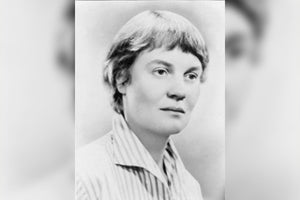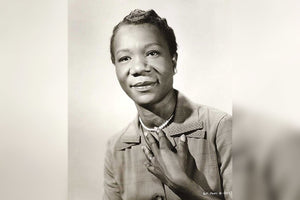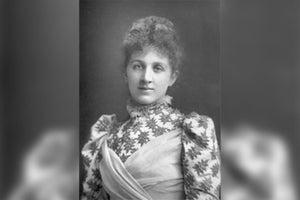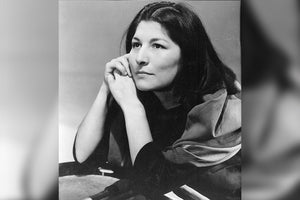Birthday: June 22, 1909
Who is Katherine Dunham?
Katherine Dunham is the inventor of the Dunham technique and a renowned dancer and choreographer of African-American descent. She built her own dance empire and was hailed as the queen of black dance. Katherine was also an activist, author, educator, and anthropologist.
Five Facts about Katherine Dunham
Founded a school which was an embodiment of the diversity of cultural principles
Incorporated African American, Caribbean, African, and South American touches to her ballet dances
Innovator of modern African-American dance and the anthropology of dance
Choreographed over 90 solo dances
Was called “dancer Katherine the Great” by the Washington Post
Inspirational Quotes from Katherine Dunham
“Go within everyday and find the inner strength so that the world will not blow your candle out”
“I used to want the words ‘She tried’ on my tombstone. Now I want ‘She did it’”
Katherine Dunham Biography
Early Life
Katherine Dunham was born on the 22nd of June, 1909 in Chicago before she was taken by her parents to their hometown at Glen Ellyn in Illinois. Her mother passed away when Katherine was only 3 years old. The family moved to Joliet, Illinois when her father remarried. There, he ran a dry cleaning business in a place mostly occupied by white people.
In her early years, she was already fond of two things: dancing and writing. Then 12-year old Katherine wrote a book which was published later on.
She was an all-rounder in school, playing a wide array of sports such as basketball, tennis, track, and baseball. She was also the vice president of a club in their school. When she was in high school, she learned a contemporary dance based on Rudolf von Laban and Émile Jaques-Dalcroze when she joined the Terpsichorean Club.
At 15-years old, she was able to organize a fund-raising café to gain funds for the Brown's Methodist Church found in Joliet where her first public dance performance took place.
Dance Career
Katherine Dunham was promising in almost all fields. She was academically excellent in the field of anthropology and was a profound writer of many books including “Journey to Accompong”. However, her heart and devotion always belonged to dancing.
Her dance career started when she joined the Little Theater Company of Harper Avenue and exposed herself to ballet and other dance forms such as Spanish, East Indian, Javanese, and Balinese with the help of her mentors Ludmilla Speranzeva, Mark Turbyfill Ruth Page, and Vera Mirova.
At 21-years old, she formed a group called the Ballets Negres and opened a dance school in 1933 called the Negro Dance Group that aimed to educate young black dancers on their culture and heritage.
Her dance group rapidly gained fame and performed globally, appearing in 33 countries with Katherine continuing to develop astonishing productions for their worldwide audience. Despite this fame, the group still faced financial instability due to Dunham having to support her 30-40 dancers. Their tours ended in 1960 because of bad financial management, but Dunham always finds a way to drag them out of the dump.
Her career did not halt there as she became a state Department representative for the United States to the first-ever World Festival of Negro Arts in Dakar, Senegal. She was also the first African-American woman to choreograph for the Met in 1963. Even after retirement, Katherine continued to choreograph and make productions, one of the promising ones which would be Scott Joplin's opera Treemonisha in 1972.
Social Activism
Katherine had zero tolerance for racism and many times refused to perform whenever she saw that her fellow black people were discriminated and devalued. In a predominantly white society with a superior mindset, Katherine was often faced with diplomatic conflicts during her tours.
Multiple times, the group was refused to be given accommodation because of their race, and in 1950, she made sure to have this incident publicized. This became a worldwide issue that eventually led to the passing of the Afonso Arinos Law which states that racial discrimination in public is a considered a felony in Brazil.
Katherine also went on a 47-day hunger strike as a protest against the discriminatory US foreign rule to Haitian boat-people, risking her life in the process. This act brought international attention to the issue. She was awarded a medal of Haiti’s highest honor from Haitian President Aristide for recognition.
Private Life and Death
Initially married to a black postal worker named Jordan McCoo, their relationship led to a divorce due to mismatched interest. Katherine then became romantically attached to John Thomas Pratt, a Canadian who was renowned as America’s best in costume and theatrical set designer.
It eventually led to an inter-racial marriage in 1949. Since then, her husband designed all sets and clothes Katherine wore until his death in 1986. Katherine died a peaceful death due to natural causes in her sleep on May 21, 2006 in New York City, a month before her 97th birthday.
Awards
Katherine garnered awards of all sorts throughout her life which include more than a dozen honorary doctorates.
- 1971: Heritage Award from the National Dance Association.
- 1979: Albert Schweitzer Music Award
- 1983: Kennedy Center Honors
- 1986: Distinguished Service Award from the American Anthropological Association
- 1987: Samuel H. Scripps American Dance Festival Award and Candace Award from the National Coalition of 100 Black Women
- 1989: National Medal of Arts
- Own star on the St. Louis Walk of Fame
- 2000: One of the first one hundred of "America's Irreplaceable Dance Treasures" by the Dance Heritage Coalition.
- 2002: 100 Greatest African-Americans
- 2004: Lifetime Achievement Award from Dance Teacher magazine
- 2005: "Outstanding Leadership in Dance Research" by the Congress on Research in Dance
![]() Fast Shipping
Fast Shipping![]() Subscribe to our Newsletter
Subscribe to our Newsletter![]() 🌟 New Global Competition 🌟
🌟 New Global Competition 🌟















